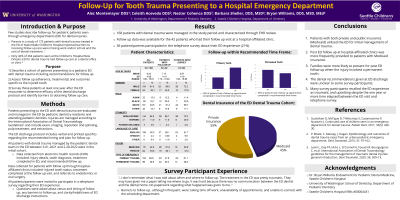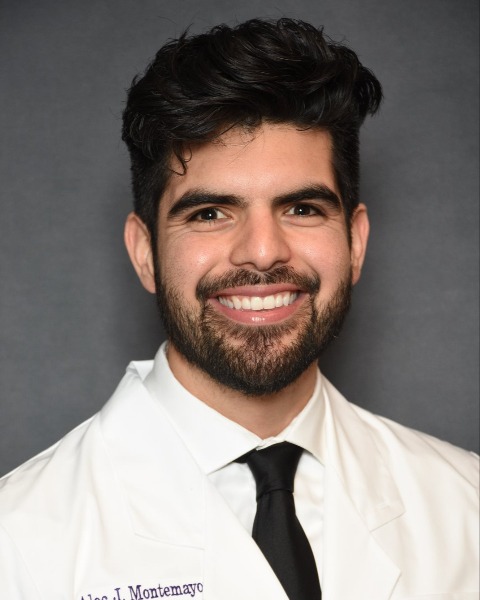Practice Management
335 - Follow-Up for Tooth Trauma Presenting to a Hospital Emergency Department


Alec J. Montemayor, DDS
Pediatric Dental Resident
University of Washington, Seattle, WA
University of Washington
Seattle, Washington, United States- AM
Alec J. Montemayor, DDS
University of Washington
- CA
Celeith Acevedo Moros, DDS
Seattle Childrens Hospital
- BW
Bryan Williams, DDS, MSD
Seattle Childrens Hospital
- BS
Barbara Sheller, DDS,MSD
Seattle Childrens Hospital
- BS
Barbara Sheller, DDS, MSD
Division Chief, Pediatric Dentistry
Seattle Childrens Hospital
Seattle, Washington, United States - TT
Thomas Tanbonliong, DDS
Graduate Program Director, Pediatric Dentistry
University of Washington
Seattle, Washington, United States
Presenting Author(s)
Co-Author(s)
Research Mentor(s)
Program Director(s)
Purpose: This study describes emergency department (ED) presentation/management, follow-up visits, and family experience for a cohort of patients initially presenting to a hospital with dental trauma.
Methods: Patients presented with dental trauma between March 2021 and February 2022. Data was collected from ED and follow-up notes. All families were invited to participate in a telephone survey about their experience.
Results:
168 patients (mean age 6.2 years) were included. Insurance was 55% commercial and 45% Medicaid. Primary tooth injuries (N=108) were displacement/luxation 79%, crown fractures 30%, and avulsions 13%. Permanent tooth injuries (N=66) were enamel fractures 61%, subluxation 24%, and avulsion 23%. Most frequent treatment was extraction for primary 44% and splinting for permanent teeth 26%. Follow-up details were available for 42 patients: primary (N=20), permanent (N=22). Most frequent management of primary teeth was monitoring (N=18) and extraction (N=2). Most frequent management of permanent teeth was monitoring (N=11) or referral for endodontic treatment (N=11). Thirty parents completed surveys: 19 for primary injuries and 11 for permanent tooth injuries. Fifty percent of surveyed parents had commercial insurance. All parents reported that the ED experience was intense. All but one patient had follow-up within the recommended time frame. Three families reported barriers to obtaining follow-up: appointment availability(N=3) and restricted insurance network (N=2).
Conclusions:
Guidelines recommend timely dental clinic follow-up for dental injuries that are initially treated in an ED. Given the stress of an ED encounter, families may best be supported by development of clear multimodal roadmaps specific to their child's dental injury.
Identify Supporting Agency and Grant Number:

.jpg)